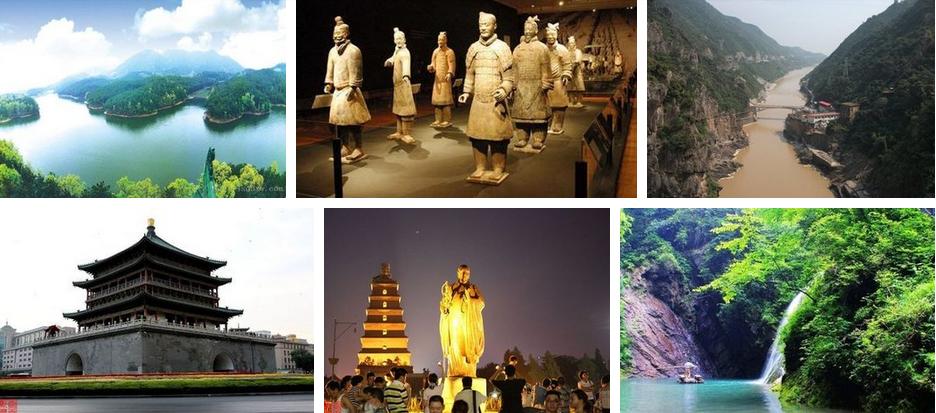
Study in Shaanxi Province
...........................................................................................................................................

Study in Shaanxi
Shaanxi Province is located in the very heart of China. Boasting a population of more than 36 million in an area of over 200,000 square kilometers (about 77,225 square miles), Shaanxi includes most of the middle stretch of the Yellow River. It borders Inner Mongolia, Shanxi, Henan, Hubei, Sichuan, Gansu and Ningxia.
When to go
Shaanxi Province's climate is temperate and semi-arid in the north and subtropical and humid in the south. Annual average temperature of Shaanxi is between 8C and 16C and its annual rainfall averages from 400 millimeters to 1000 millimeters. Spring and fall are the best times to visit Shaanxi, since the winters are cold and summer is often rainy.
History
Shaanxi Province is one of the most important cradles of ancient Chinese civilization. As far back as one million years ago, some of China's earliest inhabitants lived in this region, and began spreading their culture along the life-sustaining Yellow River. Throughout the province's long history, there are 13 dynasties who established capitals here, including the Zhou, the Qin, the Han, and the Tang. Because of this rich history, cultural relics and ruins are plentiful, and may be found preserved both above- and underground. So Shaanxi is called the 'authentic history museum' in China.
What to see
There are many historic places to be seen. One of the oldest is the Banpo Village Remains, the site of a 6000-year-old village which belongs to the Neolithic Age. In the capital city, Xian, you can see the City Wall, which was begun in the Han Dynasty, a century before the Christian era, and is now the largest and most well-preserved ancient wall, existing in China. Xian Forest of Stone Steles Museum boasts a largest collection of the stone tablets in China, 114 of which are engraved with 'classic' texts. In or near the city are 72 ancient tombs and remains, including the mausoleum of the Tang emperor Xuanyuan (the Yellow Emperor), who initiated Chinese civilization. There are many more ancient structures and temples such as the Big Goose Pagoda built in 652, Famen Temple, Bell Tower and the Drum Tower. The highlight of a Shaanxi tour for many visitors is the amazing Museum of Qin Terra-cotta Warriors and Horses who guard a site honored as the Eighth Great Wonder of the world.
Shaanxi is also abundant in natural beauty beyond its rich historical legacy. As one of the five best-known mountains in China, Mt. Huashan, 120 kilometers (or 46 miles) east of Xian, is famous for its breath-taking cliffs and awe-inspiring landscape. The Hukou waterfall on Yellow River, the second biggest one in China, is very overbearing and magnificent. And Moutain Lishan and the nearby Huaqing Hot Springs are very attractive. Their beautiful legends will bring you into a moving love story between emperor Xuanzong and a beauty named Yang Guifei.
Shaanxi is both a base area of Chinese new-democratic revolution and a place with unique folk customs. The loud resounding Shaanxi opera, the joyous clattering of gongs and drums, the exquisite cut - paper art and the peasants' paintings full of a rich flavor of life attract more and more tourists' attention from home and abroad.




 CITY
CITY News Opinion
News Opinion
 Tourist Route
Tourist Route The students here
The students here Chinese
Chinese
 English
English
 Korean
Korean
 Japanese
Japanese
 French
French
 Russian
Russian
 Vietnamese
Vietnamese
